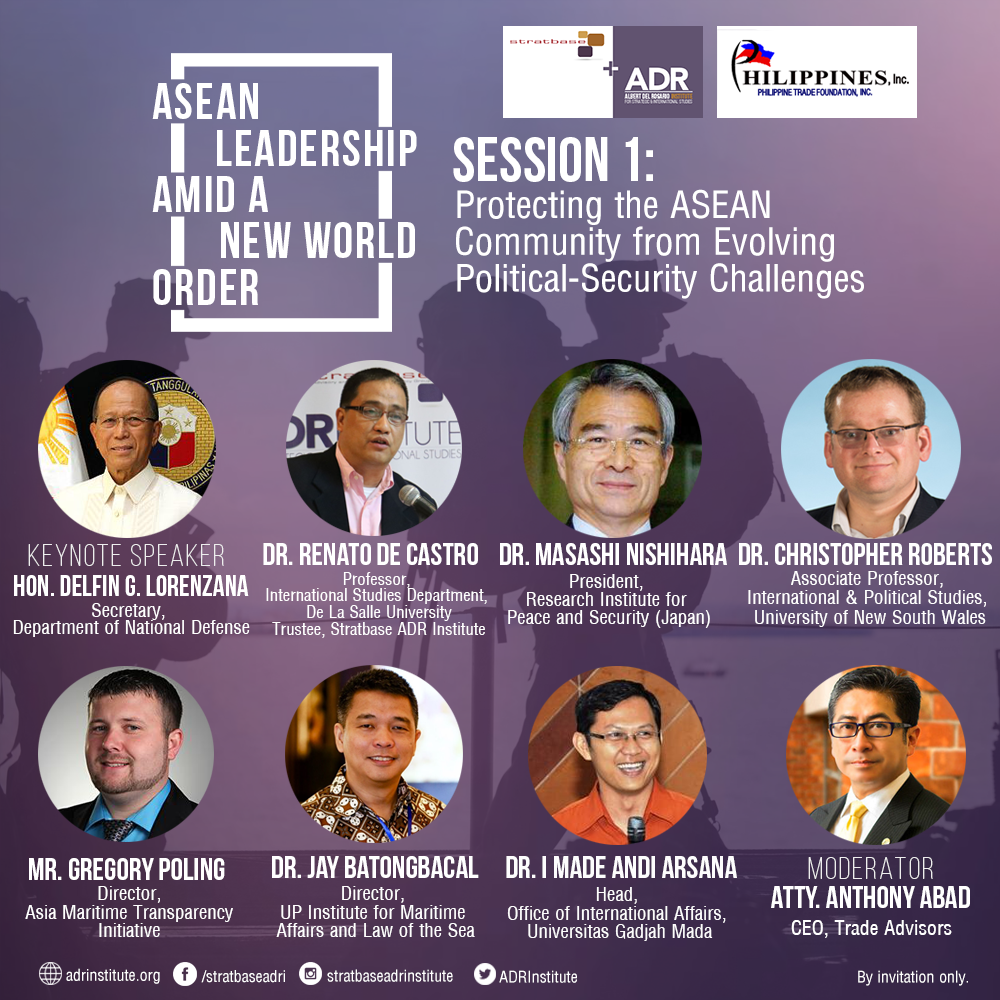When ASEAN’s Leaders and partners descend on Manila for the ASEAN Summit and the East Asia Summit this November, the association will once again have cause to highlight itself as a model of regionalism and to reflect upon its purpose as a global player. In view of ASEAN’s 50th Anniversary and the dramatic changes that its member-states have undergone during that period, the conference will feature insights on ASEAN’s ability to make use of its strengths and capture its potential as a global platform for cooperation.
The demand for meaningful cooperation in ASEAN is increasing. In an ever-more integrated world, the Philippines and its neighbors share their challenges, whose political, economic, and socio-cultural aspects transcend country borders and link together 600 million people. As Southeast Asia more closely integrates with the rest of East Asia and the broader Asia-Pacific region, the causes and consequences of our countries’ actions have also broadened.

Session 1: Protecting the ASEAN Community from Evolving Political-Security Challenges
Partner: Philippines, Inc. & U.S.-Philippines Strategic Initiative
The Asia-Pacific region continues to cope with threats to the stability of inter-state relations and to the welfare and ways of life of its people. For Southeast Asia, the challenge in the South China Sea persists, as states trade moves aimed at improving their respective positions in the waterways. In this panel, we focus on the state of play in the disputes, and how the affected countries intend to pursue avenues of cooperation that reduce the risk of violence and escalation, such as the Code for Unplanned Encounters at Sea, and promote the peace and stability of the region such as through cooperation on maritime humanitarian and search and rescue activities.

Session 2: Strengthening the Socio-Cultural Foundations of ASEAN Cooperation
Content Partner: Asia Society
The chorus of Southeast Asian states aim “to contribute to realizing an ASEAN Community that is people-oriented and socially responsible with a view to achieving enduring solidarity and unity among the peoples and Member States of ASEAN.” As part of their socio-cultural cooperation, the governments of Southeast Asia have worked to protect their citizens from health emergencies; participate in joint efforts to address environmental and maritime resource challenges; transition to knowledge-based societies; and create a sense of belonging to the ASEAN Community.
However, there seems to be a gap when it comes to executing the ASEAN socio-cultural agenda. In a region composed of several different cultures, religions, and languages, cooperation among member states can be challenging. There is also a lack of awareness about ASEAN and a lack in people’s participation. To sustain our cooperation, we need to understand our neighbors. How do we create one-ness amidst diversity? How can ordinary citizens participate in ASEAN integration?

Session 3: Realizing Economic Integration in Asia
Content Partner: Carlos P. Romulo Foundation
Although global trade is expected to rebound from its tepid performance in 2016, the future of global trade continues to be uncertain. ASEAN’s Regional Comprehensive Economic Partnership, sometimes considered the last active hope for greater international economic cooperation, has been delayed several times. Poor connectivity remains an obstacle to improving trade flows. In this context, what role can the Master Plan on ASEAN Connectivity, the APEC Connectivity Blueprint, and the Belt and Road Initiative play? What will RCEP mean for greater ASEAN centrality? Finally, and perhaps most importantly, how does the success of the economic community affect ASEAN’s global standing?
Moreover, in light of the developing socio-cultural, economic and political landscape in the Asia-Pacific region, titans of the Philippine economy provide their perspectives on the changing international landscape, and weigh in on what they see to be the risks and opportunities for the Southeast Asian business community as it takes advantage of and adapts to these new realities.

